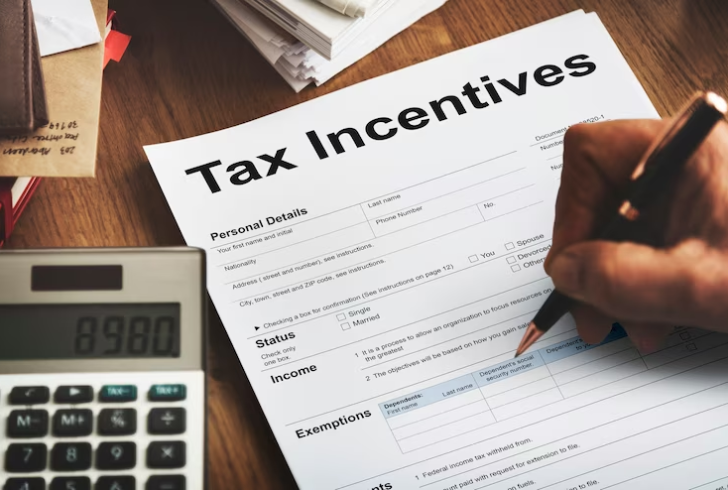Have you ever considered giving a gift that keeps on giving for a child’s future? Savings bonds might be the perfect solution! Not only are they a viable option for kids, but the process of buying them is surprisingly simple.
This comprehensive guide will equip you with everything you need to know about savings bonds for kids, from understanding their benefits to navigating the purchase and eventual redemption process.
What are Savings Bonds and How Do They Work?

Freepik | Regardless of your chosen savings bond, the key to maximizing returns is holding onto them until maturity.
Savings bonds are investments backed by the U.S. government. When you buy a savings bond, you’re loaning money to the government for a set period. In return, the government promises to pay you back the face value of the bond plus interest over time. There are two main types of savings bonds currently available for buy:
- Series I bonds: These bonds offer a combination of a fixed interest rate and an inflation-adjusted rate, which helps protect your investment from rising prices.
- Series EE bonds: These bonds offer a fixed interest rate that’s guaranteed for 20 years. The main perk of Series EE bonds is that they’re guaranteed to double in value if held onto for the full 20 years.
No matter which type of savings bond you choose, the key to maximizing your return is to hold onto them until they mature. This allows compound interest (interest earned on the interest) to work its magic and grow your money over time. Cashing in bonds early will limit their ability to grow.
Simple Steps to Buy Savings Bonds for kids

Freepik | pressfoto | Savings bonds is a secure investments backed by the U.S. government
Here’s are some simple steps to purchasing savings bonds for a minor:
- Familiarize Yourself with TreasuryDirect: The TreasuryDirect website (https://www.treasurydirect.gov/) is the only authorized platform for buying savings bonds electronically. Spend some time browsing the site to learn about the different bond options and how the website functions.
- Set Up a Minor Linked Account: If the child’s parent or legal guardian doesn’t already have a TreasuryDirect account, they’ll need to create one and establish a linked account specifically for the child. This is called a “Minor Linked Account” and is necessary for a child to receive savings bond gifts. If setting up an account for the child isn’t possible right away, you can still purchase bonds in your name and hold them in your “Gift Box” until an account is established for the child.
- Gather the Child’s Information: To complete the savings bond purchase, you’ll need the following information about the child:
- Full Name
- Social Security Number
- Treasury Direct account number (if a linked account has been established)
- Make the Purchase: On the TreasuryDirect website’s “Purchase” page, select “Add New Registration” and enter the child’s information collected in step 3. Designate the child as the primary owner of the savings bonds.
- Finalize the Transaction: Enter the desired purchase amount, choose a funding source, and confirm the purchase. The savings bonds will be deposited into your “Gift Box” on the website. They must remain there for at least five business days before you can transfer them to the child’s account (if one exists).
Purchasing with Tax Refund
While electronic purchases are preferred, it’s also possible to purchase paper Series I savings bonds using your tax refund by filling out Form 8888. This method is less common due to the convenience of electronic bonds and the fact that not everyone receives a tax refund.
Pros and Cons of Savings Bonds for Kids
Pros:
- Safety and Security: Savings bonds are a safe investment backed by the U.S. government, meaning there’s little risk of losing your principal investment.
- Inflation Protection: Series I bonds offer protection against inflation, which can erode the value of your money over time.
- Compound Interest: Holding onto savings bonds until maturity allows compound interest to work its magic, significantly growing the investment over time.
- Sensible Starting Investment: Savings bonds are a relatively low-risk investment that can be a great way to introduce children to the concept of saving and investing.
Cons:
- Lower Returns: Compared to some other investment options, savings bonds offer lower fixed interest rates and returns.
- Limited Liquidity: Savings bonds can’t be cashed in before maturity without incurring penalties. There’s a one-year holding period before cashing out, and if redeemed before five years, you lose the last three months of interest earned.
- Long-Term Commitment: To maximize the benefits of savings bonds, they need to be held onto until maturity, which can be decades for Series EE bonds.
Steps to Cash In Savings Bonds

Freepik | rawpixel.comon | Redeem Series EE bonds for qualified education expenses to enjoy tax-free interest under specific conditions.
- Log in to TreasuryDirect: Access your TreasuryDirect account and navigate to the “ManageDirect” section.
- Locate Cashing Option: Use the designated link for cashing in your savings bonds.
- Specify Redemption Amount: You can choose to redeem a part of your bonds or the entire amount, as long as they’ve been held for at least a year. Keep in mind that if you only redeem a part of a bond, you must leave at least $25 remaining in your account.
- Taxes and Reporting: Once you cash in your bonds, you’ll receive a Form 1099-INT at tax time. This form will reflect any taxable interest you earned during the year you redeemed the bonds. You’ll then need to report this information on your tax return.
- Tax Advantages for Education Expenses: Under certain circumstances, you may be able to use proceeds from redeemed Series EE bonds to pay for qualified higher education expenses and make the earned interest tax-free. But, this benefit applies to those with lower Modified Adjusted Gross Income (MAGI).
Buying savings bonds for kids is a thoughtful and sound decision. It allows them to start building a financial foundation early in life through the power of compound interest. Savings bonds offer a safe, steady, and inflation-protected way to grow their money over time.
By starting early with savings bonds, you’re gifting them not just money, but the opportunity to learn valuable saving habits and the power of long-term investing.










